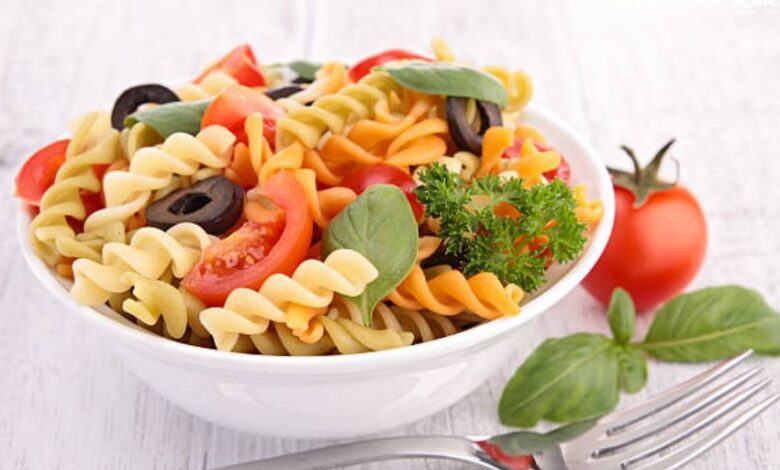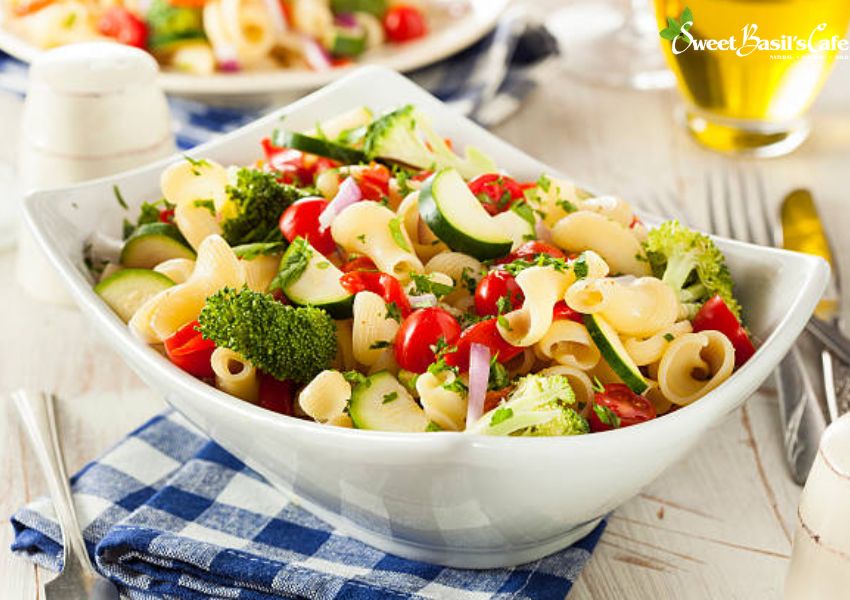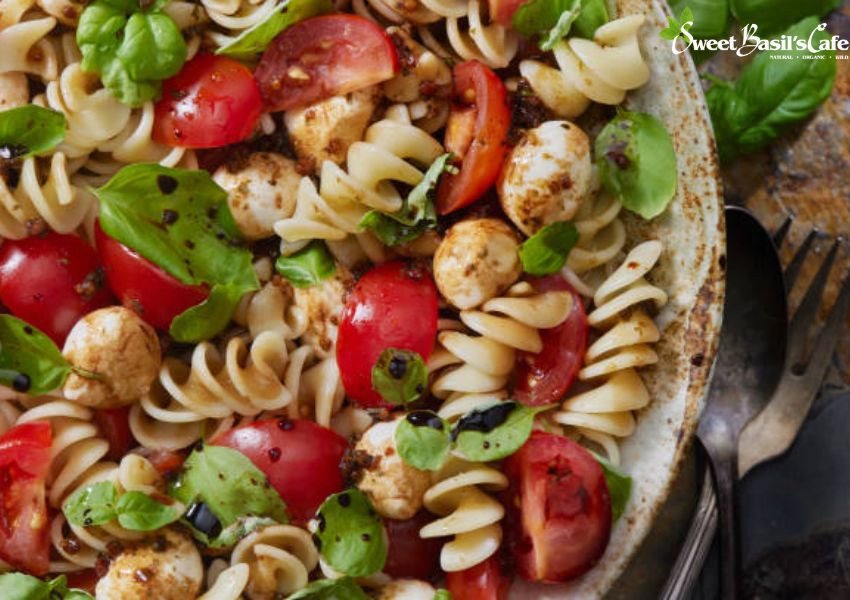How Long Does Pasta Salad Last In The Fridge?

Pasta salad is a classic dish that can be enjoyed at summer barbecues, picnics, or as an easy weeknight side. Not only is it tasty and versatile enough to satisfy any palate, but it’s also fast and simple to prepare. But one of the most commonly asked questions about how long does pasta salad last in the fridge? To answer this question it’s important to consider several factors including how you store your pasta salad, what ingredients are used in the recipe, and other safety measures you should take when making and eating food. In this blog post we will explore these topics (and more!) so that by the end of reading this you’ll have all the information needed to make sure your pasta salads last their longest!
How Long Does Pasta Salad Last?
Pasta salad typically lasts 3-5 days in the refrigerator, as long as it has been stored properly. To store pasta salad, place it in an airtight container in the refrigerator. It’s important to keep the pasta salad chilled to prevent the growth of harmful bacteria. If the pasta salad has been left out at room temperature for more than two hours, it should be discarded as it may have become unsafe to eat.
If you’re not sure if the pasta salad is still good, use your senses to check its freshness. The pasta salad should look and smell fresh, and it should not have any unusual odors or visible signs of spoilage. If you notice any changes in the appearance or smell of the pasta salad, it’s best to throw it out.
It’s also a good idea to label the container with the date that the pasta salad was made, so you know how long it has been stored in the refrigerator. This will help you keep track of when the pasta salad needs to be thrown out.

How To Store Pasta Salad
To store pasta salad, follow these steps:
- Place the pasta salad in an airtight container or sealable plastic bag.
- Make sure the container is large enough to hold all of the pasta salad, with enough room left over to close the lid or seal the bag.
- Label the container with the date that the pasta salad was made, so you know how long it has been stored in the refrigerator.
- Store the pasta salad in the refrigerator at a temperature of 40°F or below.
- If you have made a large batch of pasta salad and you don’t think you will be able to eat it all within a few days, consider dividing it into smaller portions and freezing it for later use.
By following these steps, you can help ensure that your pasta salad stays fresh and safe to eat.
Can You Freeze Pasta Salad?
Yes, you can freeze pasta salad. Pasta salad is a convenient and tasty option for a quick meal, and freezing it can help extend its shelf life. To freeze pasta salad, follow these steps:
- Place the pasta salad in an airtight container or sealable plastic bag. Make sure the container is large enough to hold all of the pasta salad, with enough room left over to close the lid or seal the bag.
- Label the container with the date that the pasta salad was made, so you know how long it has been stored in the freezer.
- Store the pasta salad in the freezer at a temperature of 0°F or below.
- Pasta salad will keep in the freezer for up to 3 months.
When you’re ready to eat the pasta salad, thaw it in the refrigerator. You can either heat it up or serve it cold, depending on your preference. It’s important to note that some types of pasta may become mushy or break apart when thawed, so you may want to consider using a firmer type of pasta, such as rigatoni or penne, when making pasta salad for freezing.
How Can You Tell If Pasta Salad Is Bad?
There are several signs that pasta salad may be bad:
- Odor: If the pasta salad has an unusual or unpleasant smell, it may be spoilage.
- Texture: If the pasta salad has a slimy or sticky texture, it may be spoilage.
- Color: If the pasta salad has changed color or has visible signs of mold, it may be spoilage.
- Taste: If the pasta salad tastes off or has an unusual flavor, it may be spoilage.
If you notice any of these signs, it’s best to throw out the pasta salad as it may have become unsafe to eat.

How About Gluten-Free Pasta Salads?
Gluten-free pasta salads are similar to regular pasta salads in terms of storage and shelf life. Gluten-free pasta is made from alternative grains, such as rice, corn, or quinoa, which do not contain gluten, a protein found in wheat, barley, and rye. Gluten-free pasta is a good option for people who are intolerant to gluten or have celiac disease.
Mediterranean Version:
When making a Mediterranean-style pasta salad, it’s best to use short cut pasta such as penne or farfalle. You can also add in other ingredients such as tomatoes, olives, feta cheese, and fresh herbs for an extra burst of flavor.
Bacon And Avocado Pasta Salad:
This version of pasta salad is a great way to jazz up a classic dish. To make it, start by cooking some bacon in a skillet until crispy. Once the bacon has cooked, mix it into your favorite pasta along with diced avocado, cherry tomatoes, and any other desired ingredients. Then season with salt and pepper to taste.
A Few Recipes For Delicious And Healthy Pasta Salads
Here are a few recipe ideas for delicious and healthy pasta salads:
- Mediterranean Pasta Salad: Combine cooked whole wheat pasta, cherry tomatoes, diced cucumber, diced red onion, sliced black olives, crumbled feta cheese, and chopped fresh basil. Dress with a mixture of olive oil, lemon juice, garlic, and a pinch of salt and pepper.
- Southwestern Pasta Salad: Combine cooked whole grain pasta, canned black beans, diced red bell pepper, diced red onion, diced avocado, and chopped fresh cilantro. Dress with a mixture of olive oil, lime juice, chili powder, and a pinch of salt and pepper.
- Asian Pasta Salad: Combine cooked whole grain pasta, steamed broccoli florets, grated carrot, diced red bell pepper, sliced scallions, and chopped fresh cilantro. Dress with a mixture of soy sauce, rice vinegar, sesame oil, and a pinch of sugar and red pepper flakes.
- Greek Pasta Salad: Combine cooked whole grain pasta, cherry tomatoes, diced cucumber, diced red onion, sliced black olives, crumbled feta cheese, and chopped fresh parsley. Dress with a mixture of olive oil, lemon juice, garlic, and a pinch of salt and pepper.
- Caprese Pasta Salad: Combine cooked whole grain pasta, cherry tomatoes, diced mozzarella cheese, and chopped fresh basil. Dress with a mixture of olive oil, balsamic vinegar, and a pinch of salt and pepper.
These are just a few ideas for healthy and delicious pasta salads. You can mix and match ingredients to create your own unique combinations and customize the flavors to your liking.
Tips For Making Your Own Pasta Salad At Home
When making your own pasta salad at home, here are a few tips to keep in mind:
- Choose the Right Pasta: Use short cut pastas such as penne or farfalle for best results. Longer strands of pasta may become mushy after cooking.
- Cook the Pasta Al Dente: It’s important to cook the pasta just until it’s al dente, meaning that it should be firm to the bite but not hard. Overcooked noodles will become mushy.
- Add Plenty of Flavor: Be sure to add plenty of flavor with herbs and spices, vinegars, oils, and other condiments. This will make your pasta salad much more interesting and flavorful.
- Add Vegetables and Proteins: To make your pasta salad more nutritious, add plenty of vegetables and proteins such as chicken or shrimp. You can also use canned beans for a vegan option.
- Refrigerate Leftovers: Any leftovers should be stored in an airtight container and refrigerated for up to three days. Make sure to toss the pasta salad before serving.
Pasta salads are an easy and delicious dish that can be customized to your liking. With a few simple tips, you can make a tasty and healthy pasta salad at home in no time!
More Similar Post You’ll Need:
- Can you freeze chicken salad
- Can you freeze coleslaw
- Can you freeze pulled pork
- How long can you freeze salmon

FAQs Of How Long Does Pasta Salad Last In The Fridge?
Is Pasta Salad Good After 5 Days?
Yes, pasta salad can be stored in the fridge for up to 5 days after it has been prepared. However, it’s best to consume the dish within 2-3 days of making it.
Can You Eat Week Old Pasta Salad?
It is not recommended to eat week-old pasta salad as it can cause food-borne illnesses.
How Long Does Homemade Macaroni Salad Stay Good In The Refrigerator?
Homemade macaroni salad can stay good in the refrigerator for up to 3-5 days. Be sure to store it in an airtight container and consume it within this timeframe.
What Can I Do If My Pasta Salad Turns Out Bland Or Dry?
If your pasta salad turns out bland or dry, you can always jazz it up with more herbs, spices, and condiments. You can also add a splash of vinegar or oil to liven up the dish.
Can I Reheat My Pasta Salad?
No, it is not recommended to reheat your pasta salad as this can cause it to become soggy or mushy. Instead, it’s best to eat the dish cold or at room temperature.
How To Fix A Dry Or Bland Pasta Salad?
If your pasta salad turns out dry or bland, you can always add more herbs and spices, as well as condiments such as vinegar and oil. You can also add vegetables and proteins to make it more nutritious. Lastly, don’t forget to toss the dish before serving for added flavor.
How Long Is Pasta With Sauce Good For In The Fridge?
Pasta with sauce can stay good in the fridge for up to 5 days. It’s best to consume it within this timeframe for optimal flavor and freshness.
Conclusion
Pasta salad is a delicious and easy dish that can be enjoyed all year round. With just a few simple tips of Sweet Basil’s Cafe, you can make your own healthy and flavorful pasta salad at home in no time! Just remember to cook the pasta al dente, add plenty of flavor, toss the salad before serving, and refrigerate any leftovers.
